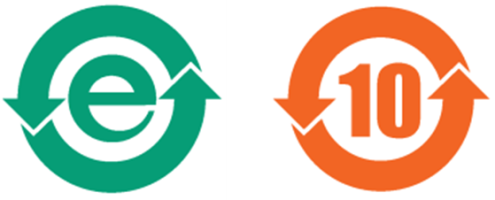Ensure Your Products Comply with the Latest China RoHS 2
On 21 Jan 2016, the Chinese Ministry of Industry and Information Technology (MIIT) has published a revised version of the Administrative Measures for the Restriction of the Use of Hazardous Substances in Electrical and Electronic Products, also known as “China RoHS 2.”
The changes impacted companies that manufacture, import or distribute electrical and electronic products in China. It’s important to note the changes to the revised version to understand the regulatory requirements.
Changes to China RoHS 2
China published changes to RoHS, which took effect beginning March 15, 2019. The changes require that standalone products listed in their catalog not have hazardous substances in excess of the maximum concentration levels. Products containing excessive levels of hazardous substances cannot be sold in China after that date.
The catalog has 12 categories of electrical and electronic products, including refrigerators, washing machines, photocopiers, microcomputers, and telephones.
China RoHS 2 Marking
It’s important to note the new regulations require all electronic and electrical products sold in China be marked with one of two logos, depending on whether they contain hazardous substances above the official concentration limits.

A green symbol with an “e” in it indicates the product does not have any hazardous substances in excess of the concentration limits. It also indicates that the product can be recycled because it is made with environmentally friendly substances.
An orange symbol with a number in it indicates the product has some hazardous substances, but can be used safely during the period indicated by the number in the center - its environmental protection use period (in years). After that period of time, the product should be recycled.
If a product contains hazardous materials in excess of the concentration limits, the manufacturer must determine and mark the environmental protection use period (in years). The manufacturer must also include the product’s manufacturing date and the list of hazardous substances it contains.
Hazardous substances include cadmium, lead, mercury, hexavalent chromium, polybrominated biphenyls, and polybrominated diphenyl ethers.
Importantly, suppliers of parts for electronic and electrical items do not need to mark the parts, but should notify the manufacturer of any potential hazardous substances in the parts they supply. Distributors should always double-check to make sure their products are compliant.
China RoHS 2 vs. EU RoHS 2
These two regulations differ from one another in several key areas.
- China RoHS 2 restricts 6 substances
- China RoHS 2 requires that electronic and electrical products be marked with one of two logos.
- The environmental protection period must be marked along with a list of hazardous materials placed in the product instructions.
- The EU RoHS 2 restricts the same 6 substances but adds an additional 4 phthalates.
- The EU requires a CE mark and WEEE mark on electronic and electrical products.
Many products that are acceptable in the EU are not acceptable in China, as China doesn’t have the same exemptions as the EU. Products brought into China must have their hazardous substances explained in the product instructions.
The QIMA Difference
It’s easy to schedule your compliance tests with our online application and mobile platform. You can book new tests, check order status and check results online easily from your mobile device. You can see valuable supply chain insights, industry benchmarking data, a summary of your QC activity, and your supplier’s quality stats in one convenient location.
Why Choose QIMA?
- Industry-leading turnaround time for testing, inspections, and audits
- Supply chain intelligence: you get supplier and quality stats in real time
- All-inclusive pricing: flat rates for inspections and audits; instant quotes for testing
- Online and mobile access: manage your orders and access data anywhere, any time
- Operations in 85 countries, 2,500 auditors and inspectors
- Global lab network in Asia, Europe and Americas, 700+ lab testing experts
Because the changes to RoHS 2 are critical for manufacturers, it’s important to take note of these changes and follow the guidelines carefully. QIMA is a trusted partner that can help you ensure your compliance with RohS 2 and stay compliant.
Easily Schedule Your Rohs 2 China Compliance Tests Online
Our online platform and mobile application make it easy for you to schedule RoHS 2 compliance testing, and receive your results at any time. Book new tests, view pending orders, and access results from your mobile device. Our online platform provides valuable supply chain insights, including a summary of your QC activity, all of your supplier’s quality stats, industry benchmarking data, and more.
Get Started: Login or create your account

